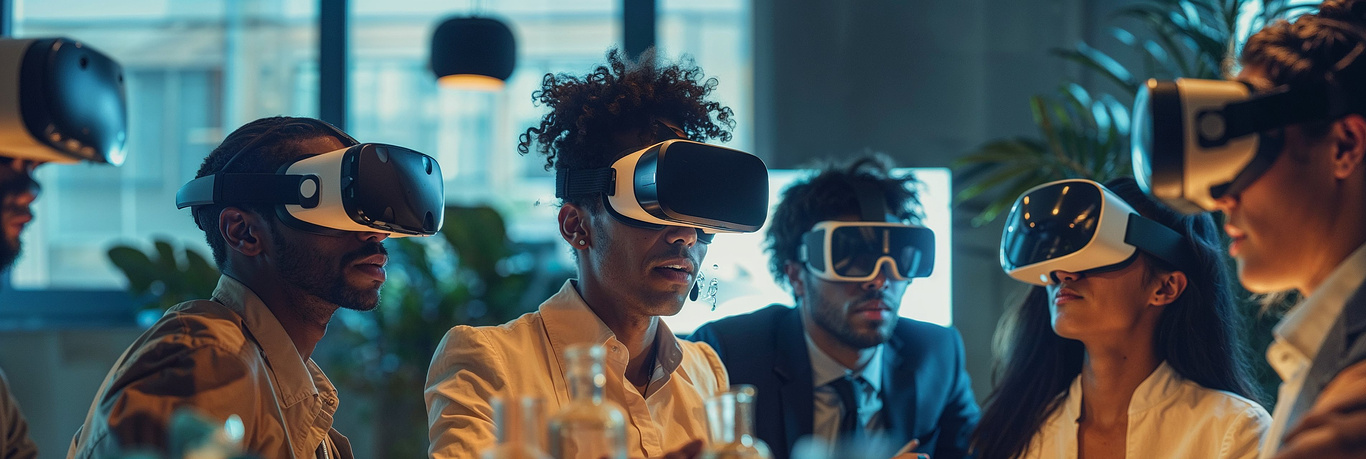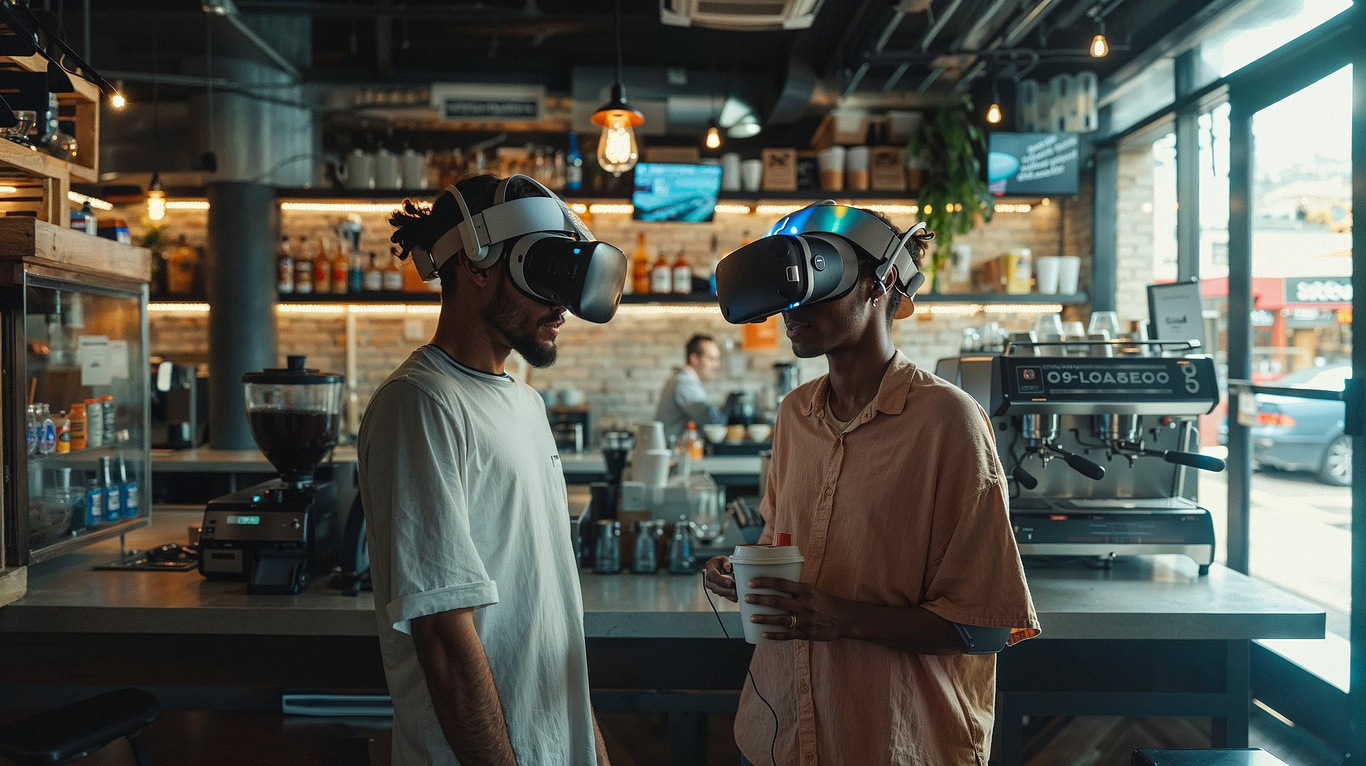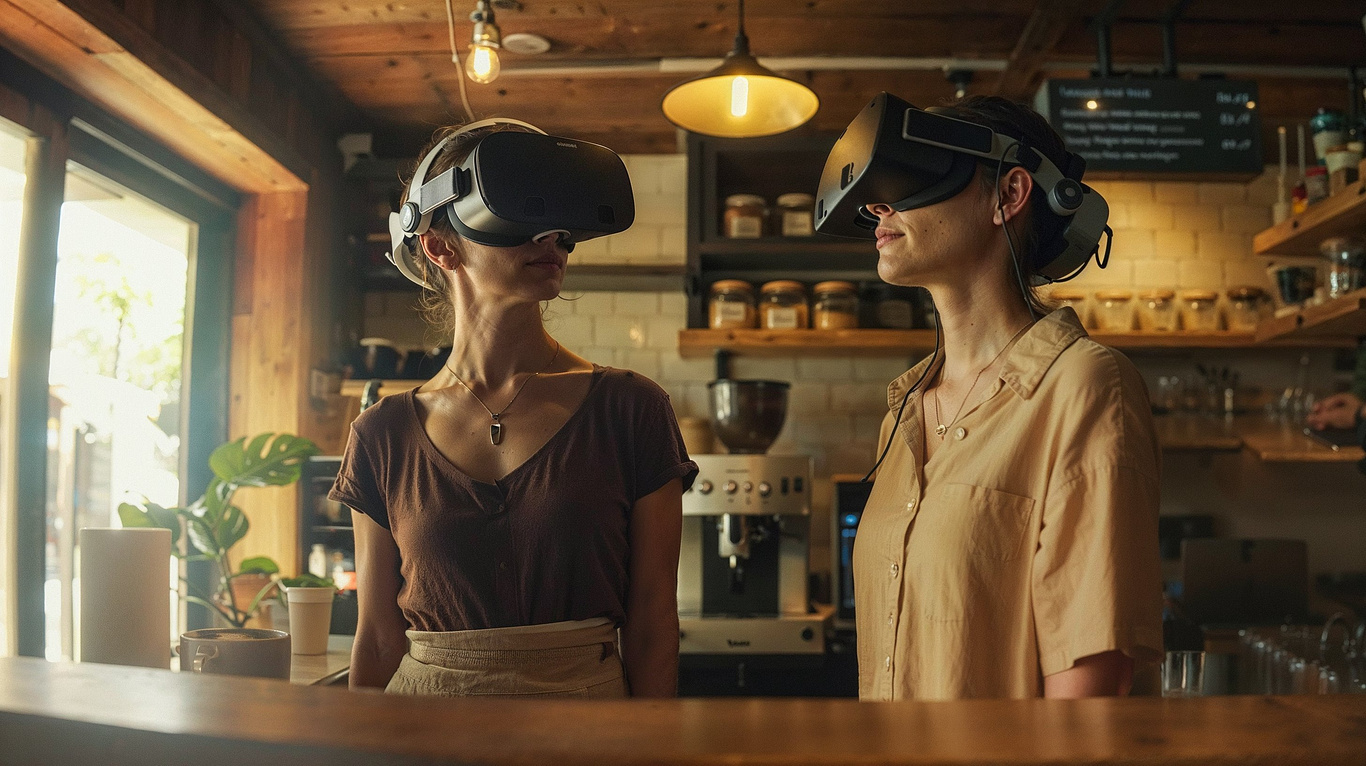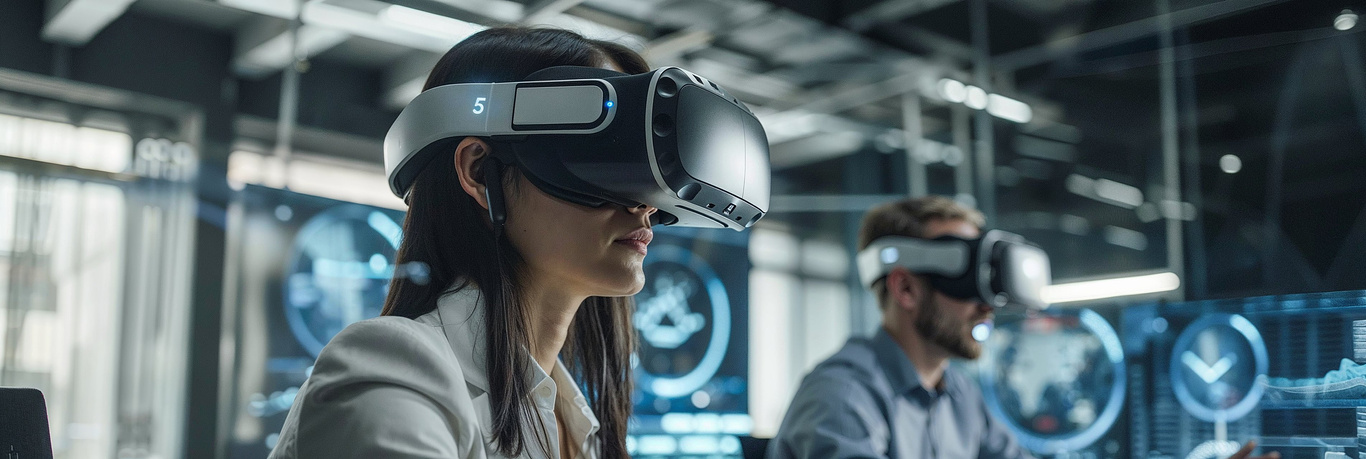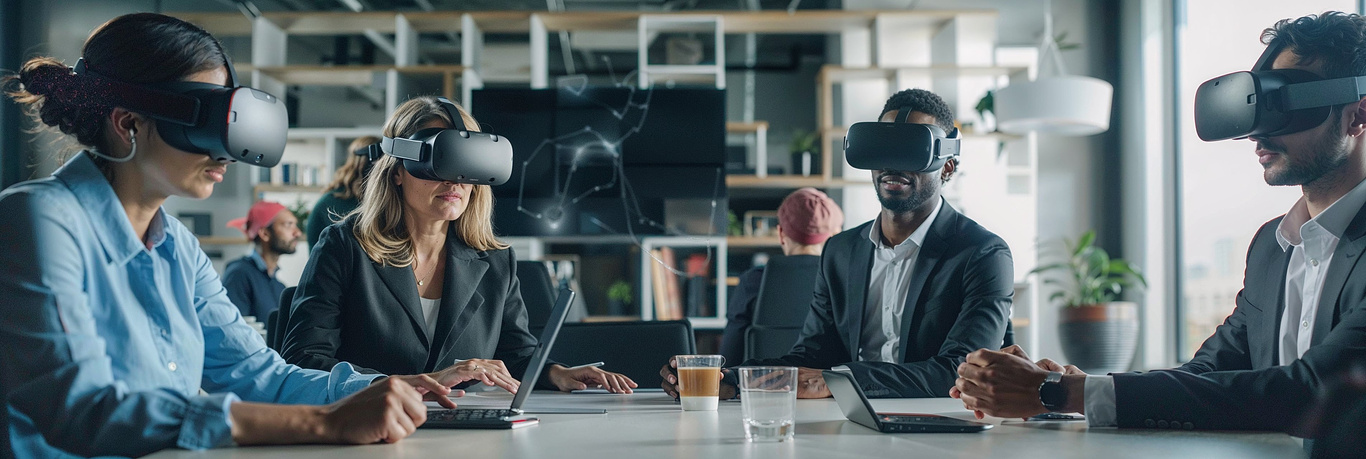
Business In Archviz
Can Apple Vision Pro Be The Future of Archviz Industry?
If you’re reading this, chances are you're deeply involved in or fascinated by architectural visualization (archviz), understanding its pivotal role in the architecture industry. Archviz breathes life into projects, offering clients a glimpse into the meticulous details and design intricacies through compelling images or films. It has become an indispensable element of presentations, with architects leveraging 3D models and photorealistic images as essential tools in the design process.
Despite its technical evolution and emergence as an industry in its own right over recent decades, the application of archviz has largely remained unchanged. Traditional mediums like print and big screens dominate still image presentations, while animations often find their home online. Arguments about the absence of advanced technology to transcend conventional presentation methods fall short, overshadowed by challenges ranging from the high costs of innovation to the reluctance in adopting new approaches.
Enter the Vision Pro by Apple, a device that's stirring excitement across the globe with its potential as a game-changer. Unlike typical VR offerings, Apple brands the Vision Pro as a leap into "revolutionary space computing," promising a shift away from the usual VR narrative. This raises a crucial question: Does the Vision Pro represent the long-awaited breakthrough that will transform archviz and, by extension, our daily lives, or is it merely another addition to the crowded VR landscape?
The Apple Vision Pro: An Overview
But what exactly sets the Vision Pro as 'revolutionary technology’, and why might it be the catalyst for dramatic changes in architectural visualization? Answering this question is complex and somewhat speculative, especially considering that, like most, I have yet to experience the Vision Pro firsthand (therefore, this piece is not intended to be a review by any means). Yet, it's possible to dissect the technology behind Apple's latest innovation to uncover its potential impact on archviz.
Based on a wealth of reviews and promotional materials currently circulating online, we can categorize the Vision Pro's standout features into several key advancements:
- Screen Quality: The Vision Pro's screen resolution and image quality set it apart from competitors like Meta’s Quest 3, promising an unparalleled visual experience. For archviz professionals, this could mean the ability to present and review designs with a level of detail and clarity previously unattainable, making virtual models nearly indistinguishable from reality.
- Tracking: The device's advanced tracking features, which allow virtual objects to appear locked in place within the real world, could dramatically enhance the sense of immersion in architectural spaces. This technology not only improves the realism of virtual models but also enables a more intuitive exploration of designs, potentially revolutionizing client presentations and design iterations.
- High Quality See-Through Mode: By blending the digital and the physical, the Vision Pro's see-through mode enables users to interact with their real environment while engaged with virtual content. This feature opens up new possibilities for architects and designers to conduct site analyses and client walkthroughs in ways that were previously inconceivable, potentially transforming the design and review processes.
- Communication: Emphasizing the device's communication capabilities, Apple envisions a new era of collaborative design work. The ability to interact with others through Facetime using virtual 3D avatars could replicate the nuances of face-to-face conversations, offering a more connected and engaging way to discuss and refine projects remotely.
Despite these advancements, the architectural visualization industry has witnessed the rise and fall of many 'game-changing' technologies. The challenge for the Vision Pro will be not just to introduce these innovative features but to integrate them into the workflows of archviz professionals in a way that addresses past shortcomings. Technologies that have promised to revolutionize the field have often been met with enthusiasm, only to be sidelined due to factors like cost, complexity, or simply failing to meet the practical needs of the industry.
As we speculate on the future of architectural visualization with the introduction of the Vision Pro, it's crucial to consider whether this device can overcome the hurdles that have hindered the adoption of previous innovations. Will the Vision Pro be the technology that finally bridges the gap between promise and practice, or will it join the ranks of those that couldn't quite catalyze the lasting change it aimed for?
Impact on Architectural Visualization
Virtual objects that look like they’re really there
The potential of the Apple Vision Pro to revolutionize architectural visualization hinges on its ability to offer immersive experiences previously unattainable with existing MR technologies. The Vision Pro's advanced tracking, high-quality screens, and seamless pass-through technology set the stage for an unparalleled level of immersion. By allowing digital objects to be 'placed' within the real world with convincing visuals and interactivity, the Vision Pro promises a new way for clients to engage with designs in real-time, akin to interacting with a tangible scale model.
However, it's crucial to recognize the limitations inherent in this first iteration of the technology. One of the current drawbacks, as noted, is the absence of a truly shared experience. Despite being in the same physical space, users cannot simultaneously interact with the same digital elements in a cohesive manner, a limitation that devices like Meta’s Quest 3 don’t have and at a significantly lower cost. This limitation underscores the early state of the Vision Pro's development and the challenges of creating a shared immersive environment.
The potential of the Apple Vision Pro to revolutionize architectural visualization hinges on its ability to offer immersive experiences previously unattainable with existing MR technologies. The Vision Pro's advanced tracking, high-quality screens, and seamless pass-through technology set the stage for an unparalleled level of immersion. By allowing digital objects to be 'placed' within the real world with convincing visuals and interactivity, the Vision Pro promises a new way for clients to engage with designs in real-time, akin to interacting with a tangible scale model.
However, it's crucial to recognize the limitations inherent in this first iteration of the technology. One of the current drawbacks, as noted, is the absence of a truly shared experience. Despite being in the same physical space, users cannot simultaneously interact with the same digital elements in a cohesive manner, a limitation that devices like Meta’s Quest 3 don’t have and at a significantly lower cost. This limitation underscores the early state of the Vision Pro's development and the challenges of creating a shared immersive environment.
In a notable demonstration by journalist Cleo Abram and tech YouTuber Marques Brownlee, the Apple Vision Pro's interaction with a virtual Formula 1 racing car model showcases its high-quality visualization capabilities. This example highlights the device's potential for rendering detailed digital objects within a real-world context, offering a glimpse into the immersive experiences it could provide in architectural visualization. However, it also points to current limitations, particularly in creating shared experiences where multiple users interact with the same digital content simultaneously.
This case study underscores the Vision Pro's impressive visual fidelity but also emphasizes the need for further development to fully realize collaborative and interactive architectural presentations. As the technology progresses, overcoming these challenges will be key to harnessing the Vision Pro for comprehensive, collaborative design work in architecture.
While the expectation of future software updates to address these issues is reasonable, it introduces considerations about the technological infrastructure required to support such advancements. The need for a Wi-Fi 6 network to facilitate proper interaction points to potential accessibility issues, particularly in off-site presentations where network conditions are beyond the control of the presenter.
As we project the future of architectural visualization with technologies like the Vision Pro, it's important to weigh the balance between innovation and practicality. The device's current limitations highlight the gap between the ideal scenario of fully immersive and interactive presentations and the practical challenges of achieving such experiences in varied settings. Nonetheless, the Vision Pro's introduction into the market is a significant step forward, opening up discussions on how MR can be effectively integrated into architectural visualization to enhance client engagement and presentation outcomes.
A collaboration tool
In their discussion, Abram envisions the Vision Pro as a gateway to what once seemed a sci-fi fantasy: teleportation-like communication. This vision suggests a future where interactions through the Vision Pro mimic physical presence, offering a new dimension to remote communication. Given the seismic shift towards remote work catalyzed by the recent pandemic, our collective readiness to embrace digital meetings has significantly increased. Tools like Zoom, Meet, and Teams have become staples of professional environments, paving the way for advanced technologies like the Vision Pro to integrate seamlessly into daily routines. This shift in work culture suggests a prime opportunity for the Vision Pro to excel, making it distinct from past attempts to innovate in digital communication spaces.
In their discussion, Abram envisions the Vision Pro as a gateway to what once seemed a sci-fi fantasy: teleportation-like communication. This vision suggests a future where interactions through the Vision Pro mimic physical presence, offering a new dimension to remote communication. Given the seismic shift towards remote work catalyzed by the recent pandemic, our collective readiness to embrace digital meetings has significantly increased. Tools like Zoom, Meet, and Teams have become staples of professional environments, paving the way for advanced technologies like the Vision Pro to integrate seamlessly into daily routines. This shift in work culture suggests a prime opportunity for the Vision Pro to excel, making it distinct from past attempts to innovate in digital communication spaces.
The introduction of any cutting-edge communication technology inevitably raises the question of compatibility and standards. The familiar struggle between Android and iPhone users, exemplified by the 'Green Bubble/Blue Bubble' debate, underscores the potential challenges in achieving seamless communication across different platforms. While alternatives like WhatsApp and Telegram offer cross-platform solutions globally, the reliance on a proprietary platform by Apple could pose significant barriers to universal adoption, especially for a device priced at USD 3,499.00. The decision to invest in such technology not only hinges on its innovative features but also on its ability to integrate within the broader ecosystem of communication tools, presenting a critical consideration for potential users. A cross-platform future seems unlikely, given Apple’s past record.
Should the hurdles of communication standards be navigated successfully, however, the interaction facilitated by Apple's Vision Pro could revolutionize client and studio collaborations. The device's ability to offer a form of 'teleportation' to a client's office for discussions or presentations marks a leap beyond the constraints of conventional digital meetings like those on Teams. This new paradigm of collaboration promises to erase the barriers and shortcomings of current remote communication methods, heralding a new era of seamless and intuitive project engagement.
Challenges and Considerations
The Apple Vision Pro marks an ambitious leap into mixed reality (MR), with its success largely depending on its adoption by developers and enthusiastic users. The initial scarcity of dedicated applications highlights potential hurdles in fully leveraging this new platform's capabilities.
The device's practicality is also under scrutiny due to its weight (approximately 630g) and ergonomic design, which may impact user comfort and productivity during prolonged use. The limitations posed by the virtual screen size and the interface design could further restrict its usability in professional contexts.
For the Vision Pro to become a staple in professional workflows, particularly in architectural visualization, it must address these challenges. This includes facilitating content creation for archviz professionals who may lack extensive software development experience. Apple's provision of a comprehensive SDK or similar tools will be critical to enable easy and rapid development of MR content by artists and studios.
Considering its high price and the significant investment required for full functionality within an exclusively Apple ecosystem, the Vision Pro must provide unmatched value to justify its adoption across various industries. Its future hinges on surpassing the performance of more affordable options and avoiding the fate of becoming merely an expensive novelty. At this point, the ease with which archviz professionals can generate content for the platform remains a significant concern. Without streamlined content creation processes, the Vision Pro's groundbreaking potential could be difficult to realize.
Future Directions
As Apple's Vision Pro enters the market, it's clear we're witnessing an early, ambitious iteration of what could become a transformative tool for architects and studios. This near-beta release teems with potential, yet significant enhancements are anticipated, potentially revolutionizing its design and utility in subsequent versions.
The real test for the Vision Pro lies ahead, as its adoption by the architectural community will hinge on its performance, practical applications, and the evolution of its features. Innovations such as a presentation mode that allows architects to guide a client through a project remotely, or shared virtual spaces for interactive model exploration, hint at the device's potential to redefine project presentation and collaboration.
However, the trajectory of this technology will ultimately be shaped by its usefulness in professional settings. As sales and real-world applications begin to paint a clearer picture of its value, the architectural field may find novel ways to leverage the Vision Pro, potentially ushering in a new era of design and client interaction inspired by visions once confined to science fiction. The path forward for the Vision Pro and similar technologies will depend on their ability to meet the practical demands of the industry, guiding their development and integration into professional workflows.
Of course, the news revealed this week may cast a somewhat gloomy outlook on the future, but it's still too early to determine how the Vision Pro and its unique features will perform in the real world once the initial excitement of the launch fades.
Of course, the news revealed this week may cast a somewhat gloomy outlook on the future, but it's still too early to determine how the Vision Pro and its unique features will perform in the real world once the initial excitement of the launch fades.
Conclusion
The Apple Vision Pro opens up new possibilities for architectural visualization, merging the digital and real worlds in ways we haven't seen before. As we start using this technology, the combined efforts of companies like Apple and the architects and designers who shape our environments will really show us what's possible. The Vision Pro might be just another gadget, but it's also a glimpse into the future, pushing us to think bigger and dive into new areas of architectural creativity. Now, the big question isn't just if the Vision Pro can change archviz, but how we'll use it to push the limits of architectural design and presentations.
Revision: Alexandre Calil
Revision: Alexandre Calil
You must be logged in to post a comment. Login here.
About this article
This article highlights the introduction of Apple's Vision Pro, a device poised to potentially revolutionize archviz by moving beyond traditional VR capabilities into "revolutionary space computing." Questioning whether it will truly transform archviz or simply join the ranks of existing VR technology, we delve into the future of architectural presentations with this innovative tool.
visibility385
favorite_border1
mode_comment0



